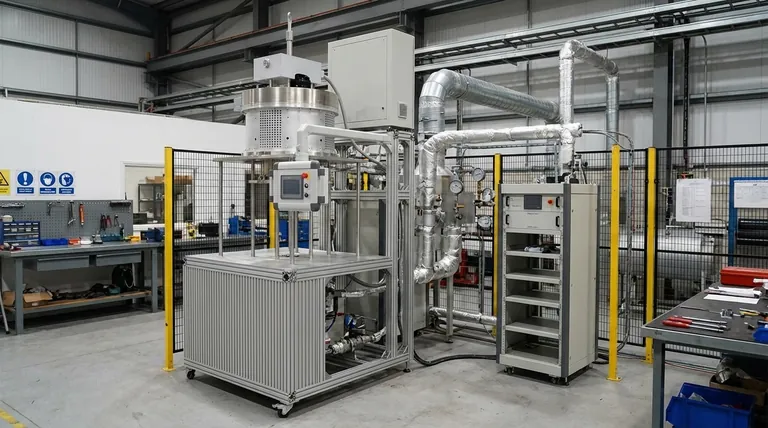While technologically advanced, plasma gasification faces significant practical disadvantages that hinder its widespread adoption. The primary problems include low operating efficiency, persistent difficulty in controlling pollutant emissions, the failure to create high-value byproducts, and a notable lack of proven, large-scale applications.
The core challenge of plasma gasification is not its scientific potential, but the considerable gap between its theoretical benefits and its current real-world performance. The technology is often marked by operational instability, high costs, and significant scalability issues.

The Challenge of Operational Reliability
For any industrial process, consistent and predictable operation is paramount. Plasma gasification currently struggles to meet this fundamental requirement, leading to significant economic and logistical problems.
Low Operating Efficiency
The process demands a substantial energy input to generate and sustain the plasma torch. When the overall system operates with low efficiency, the net energy gain can be minimal or even negative, undermining the primary goal of creating energy from waste.
Frequent System Shutdowns
Real-world implementations, particularly integrated furnace units, have demonstrated a pattern of operational instability. They often run at a low operating load, suffer from frequent abnormal shutdowns, and have a short effective operating time.
Difficulty Reaching Designed Capacity
A direct consequence of these reliability issues is the struggle to meet the plant's designed production capacity. This failure to perform as specified makes the technology a high-risk investment and an unreliable solution for consistent waste management.
Environmental and Byproduct Hurdles
A key promise of advanced waste-to-energy technology is superior environmental performance and the creation of valuable byproducts. Plasma gasification often falls short on both counts.
Inconsistent Pollutant Control
Despite the high temperatures that should theoretically destroy pollutants, controlling emissions remains a significant challenge. Flue gas purification systems can have design defects, leading to emissions that exceed mandated environmental standards. This creates a serious regulatory and reputational risk.
Underutilization of Vitreous Slag
The inert, glass-like slag produced by the process is often promoted as a high-value construction material. In practice, this byproduct is frequently underutilized or fails to meet quality standards, turning a potential revenue stream into an additional disposal cost.
Understanding the Trade-offs: Scalability and Cost
The ultimate test of a technology is its ability to scale effectively and economically. This is where plasma gasification's theoretical advantages collide with practical reality.
The Lack of Large-Scale Application
The technology remains largely confined to small or medium-scale applications. This indicates that the operational and economic challenges are magnified during scale-up, preventing the development of large, commercially viable plants that can handle municipal-level waste volumes.
High Implied Costs
While not always stated directly, the combination of low efficiency, complex and unreliable pollution control systems, frequent downtime, and the need for highly specialized operators points to extremely high capital (CAPEX) and operational (OPEX) costs. These factors make it difficult for plasma gasification to compete with more established technologies.
Evaluating Plasma Gasification for Your Project
When considering this technology, it is critical to align its known weaknesses with your primary objectives.
- If your primary focus is waste elimination at any cost: The technology can effectively destroy hazardous materials, but you must be prepared for high operational costs and significant downtime.
- If your primary focus is profitable energy generation: The current challenges of low efficiency and poor reliability make plasma gasification a high-risk pathway to a profitable waste-to-energy model.
- If your primary focus is guaranteed environmental compliance: The documented difficulties in consistently controlling pollutant emissions present a significant and ongoing regulatory risk.
Ultimately, the viability of a plasma gasification project depends on closing the gap between its powerful potential and its demanding operational realities.
Summary Table:
| Disadvantage | Key Challenge | Practical Impact |
|---|---|---|
| Operational Reliability | Low efficiency, frequent shutdowns | High risk, unpredictable waste processing |
| Environmental Performance | Difficulty controlling emissions | Regulatory and reputational risk |
| Byproduct Value | Underutilized, low-quality slag | Missed revenue, added disposal cost |
| Scalability & Cost | Lack of large-scale success | High CAPEX/OPEX, poor economic viability |
Need a reliable and efficient solution for your laboratory's thermal processing or material synthesis?
The operational challenges of emerging technologies like plasma gasification highlight the importance of proven, dependable equipment. At KINTEK, we specialize in robust and efficient lab equipment, including furnaces and reactors designed for consistent performance and precise control. Our products help you avoid the pitfalls of unproven technologies, ensuring your research and production meet the highest standards of reliability and environmental compliance.
Let KINTEK empower your lab's success. Contact our experts today to find the perfect solution for your specific needs!
Visual Guide

Related Products
- 915MHz MPCVD Diamond Machine Microwave Plasma Chemical Vapor Deposition System Reactor
- Chemical Vapor Deposition CVD Equipment System Chamber Slide PECVD Tube Furnace with Liquid Gasifier PECVD Machine
- RF PECVD System Radio Frequency Plasma-Enhanced Chemical Vapor Deposition RF PECVD
- Laboratory Sterilizer Lab Autoclave Pulse Vacuum Lifting Sterilizer
- VHP Sterilization Equipment Hydrogen Peroxide H2O2 Space Sterilizer
People Also Ask
- What is MPCVD? Unlock Atom-by-Atom Precision for High-Purity Materials
- What are the advantages of microwave plasma? Faster, Purer Processing for Demanding Applications
- What is microwave plasma CVD? A Guide to High-Purity Diamond and Material Synthesis
- What is the microwave plasma method? A Guide to High-Purity Material Synthesis
- How does MPCVD work? A Guide to Low-Temperature, High-Quality Film Deposition


















